Hyundai IONIQ 5 vs Kia PV5 – Which one offers the better deal?
Everyday use, family trips or long-distance drives – here’s where the differences show.
Discover whether Hyundai IONIQ 5 or Kia PV5 fits your lifestyle better.
Here’s where it gets real: The technical differences in detail
Costs and Efficiency: When it comes to price and running costs, the biggest differences usually appear. This is often where you see which car fits your budget better in the long run.
Kia PV5 has a a bit advantage in terms of price – it starts at 32800 £, while the Hyundai IONIQ 5 costs 38500 £. That’s a price difference of around 5665 £.
In terms of energy consumption, the advantage goes to the Hyundai IONIQ 5: with 15.60 kWh per 100 km, it’s clearly more efficient than the Kia PV5 with 19.80 kWh. That’s a difference of about 4.20 kWh.
As for range, the Hyundai IONIQ 5 performs visibly better – achieving up to 570 km, about 170 km more than the Kia PV5.
Engine and Performance: Power, torque and acceleration say a lot about how a car feels on the road. This is where you see which model delivers more driving dynamics.
When it comes to engine power, the Hyundai IONIQ 5 has a strongly edge – offering 650 HP compared to 163 HP. That’s roughly 487 HP more horsepower.
In acceleration from 0 to 100 km/h, the Hyundai IONIQ 5 is strongly quicker – completing the sprint in 3.50 s, while the Kia PV5 takes 10.70 s. That’s about 7.20 s faster.
In terms of top speed, the Hyundai IONIQ 5 performs decisively better – reaching 260 km/h, while the Kia PV5 tops out at 135 km/h. The difference is around 125 km/h.
There’s also a difference in torque: the Hyundai IONIQ 5 pulls decisively stronger with 770 Nm compared to 250 Nm. That’s about 520 Nm difference.
Space and Everyday Use: Beyond pure performance, interior space and usability matter most in daily life. This is where you see which car is more practical and versatile.
Both vehicles offer seating for 5 people.
In curb weight, the Kia PV5 is slight lighter – 1860 kg compared to 1955 kg. The difference is around 95 kg.
In terms of boot space, the Kia PV5 offers markedly more room – 1320 L compared to 520 L. That’s a difference of about 800 L.
In maximum load capacity, the Kia PV5 performs markedly better – up to 4420 L, which is about 2840 L more than the Hyundai IONIQ 5.
When it comes to payload, Kia PV5 noticeably takes the win – 790 kg compared to 530 kg. That’s a difference of about 260 kg.
Our conclusion: The Hyundai IONIQ 5 proves to be outperforms the competitor in nearly every area and thus becomes our DriveDuel Champion!
Overall, Hyundai IONIQ 5 is the better all-rounder in this comparison.
Hyundai IONIQ 5
The Hyundai IONIQ 5 showcases a bold and futuristic design that captures attention with its striking facade and sharp lines. This electric vehicle offers an impressive blend of performance and efficiency, making it a compelling choice for environmentally conscious drivers. Inside, the spacious and tech-forward interior provides a comfortable and engaging driving experience for both driver and passengers.
details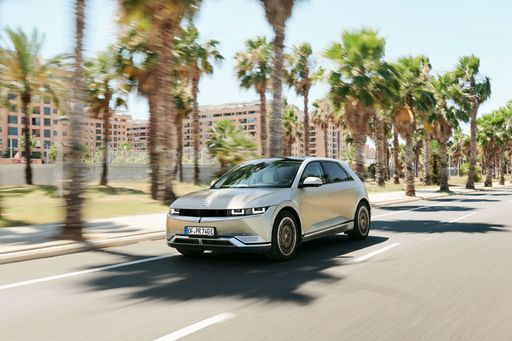 @ hyundai.news
@ hyundai.news
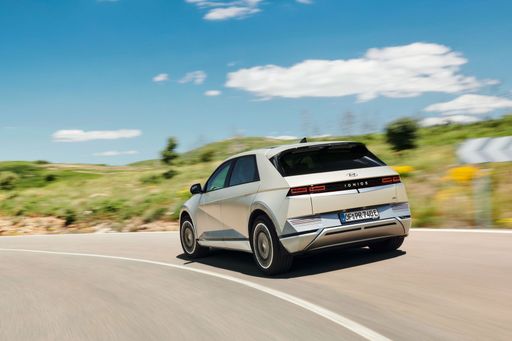 @ hyundai.news
@ hyundai.news
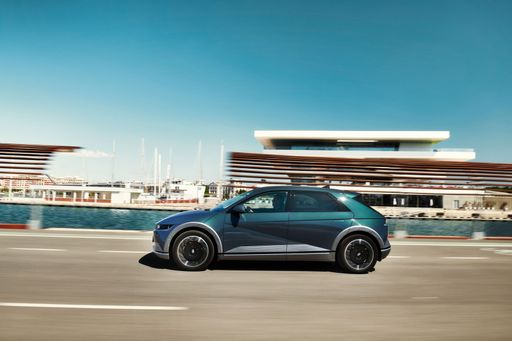 @ hyundai.news
@ hyundai.news
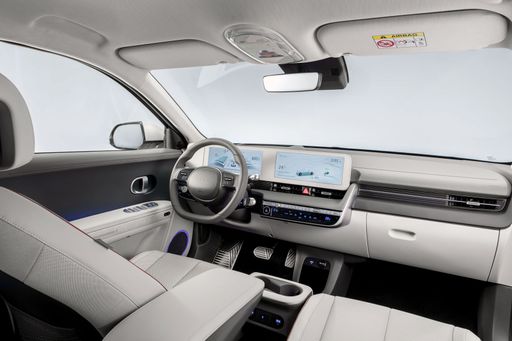 @ hyundai.news
@ hyundai.news
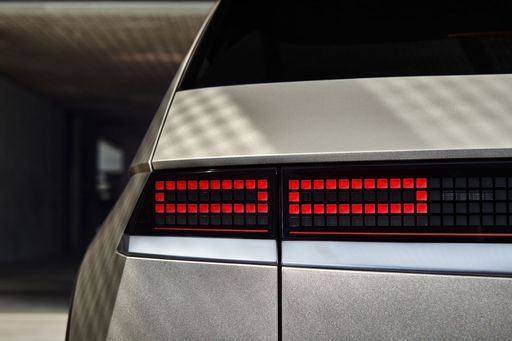 @ hyundai.news
@ hyundai.news
Kia PV5
The Kia EV5 is an exciting new entrant in the landscape of electric SUVs, promising a blend of style and innovation that captures attention. It boasts a sleek and modern design that aligns with Kia's evolving aesthetic identity, blending practicality with eye-catching details. With its foray into the electric vehicle segment, the EV5 is set to offer a highly competitive option for those looking to embrace sustainable mobility without compromising on comfort or tech features.
details

|
|
|
|
|
Costs and Consumption |
|
|---|---|
|
Price
38500 - 64200 £
|
Price
32800 - 38900 £
|
|
Consumption L/100km
-
|
Consumption L/100km
-
|
|
Consumption kWh/100km
15.6 - 21.2 kWh
|
Consumption kWh/100km
19.8 - 20.3 kWh
|
|
Electric Range
440 - 570 km
|
Electric Range
288 - 400 km
|
|
Battery Capacity
63 - 84 kWh
|
Battery Capacity
51.5 - 71.2 kWh
|
|
co2
0 g/km
|
co2
0 g/km
|
|
Fuel tank capacity
-
|
Fuel tank capacity
-
|
Dimensions and Body |
|
|---|---|
|
Body Type
SUV
|
Body Type
Cargo Van, Bus
|
|
Seats
5
|
Seats
2 - 5
|
|
Doors
5
|
Doors
4 - 5
|
|
Curb weight
1955 - 2275 kg
|
Curb weight
1860 - 2145 kg
|
|
Trunk capacity
480 - 520 L
|
Trunk capacity
1320 L
|
|
Length
4655 - 4715 mm
|
Length
4695 mm
|
|
Width
1890 - 1940 mm
|
Width
1850 - 1895 mm
|
|
Height
1585 - 1605 mm
|
Height
1923 mm
|
|
Max trunk capacity
1540 - 1580 L
|
Max trunk capacity
2300 - 4420 L
|
|
Payload
385 - 530 kg
|
Payload
505 - 790 kg
|
Engine and Performance |
|
|---|---|
|
Engine Type
Electric
|
Engine Type
Electric
|
|
Transmission
Automatic
|
Transmission
Automatic
|
|
Transmission Detail
Reduction Gearbox
|
Transmission Detail
Reduction Gearbox
|
|
Drive Type
Rear-Wheel Drive, All-Wheel Drive
|
Drive Type
Front-Wheel Drive
|
|
Power HP
170 - 650 HP
|
Power HP
121 - 163 HP
|
|
Acceleration 0-100km/h
3.5 - 8.5 s
|
Acceleration 0-100km/h
10.7 - 16.3 s
|
|
Max Speed
185 - 260 km/h
|
Max Speed
135 km/h
|
|
Torque
350 - 770 Nm
|
Torque
250 Nm
|
|
Number of Cylinders
-
|
Number of Cylinders
-
|
|
Power kW
125 - 478 kW
|
Power kW
89 - 120 kW
|
|
Engine capacity
-
|
Engine capacity
-
|
General |
|
|---|---|
|
Model Year
2024
|
Model Year
2025
|
|
CO2 Efficiency Class
A
|
CO2 Efficiency Class
A
|
|
Brand
Hyundai
|
Brand
Kia
|
What drive types are available for the Hyundai IONIQ 5?
The Hyundai IONIQ 5 is available as Rear-Wheel Drive or All-Wheel Drive.
The prices and data displayed are estimates based on German list prices and may vary by country. This information is not legally binding.
